BYD Han VS Citroen Jumper – Specs, Efficiency & Price Comparison
Which model is the better choice – the BYD Han or the Citroen Jumper? We compare performance (517 HP vs 270 HP), boot capacity (410 L vs ), efficiency (18.50 kWh vs 26.20 kWh7.50 L), and of course, the price (59200 £ vs 34200 £).
Find out now which car fits your needs better!
The BYD Han (Sedan) is powered by a Electric engine and comes with a Automatic transmission. In comparison, the Citroen Jumper (Cargo Van) features a Electric or Diesel engine and a Automatic or Manuel gearbox.
When it comes to boot capacity, the BYD Han offers 410 L, while the Citroen Jumper provides – depending on what matters most to you. If you’re looking for more power, you’ll need to decide whether the 517 HP of the BYD Han or the 270 HP of the Citroen Jumper suits your needs better.
There are also differences in efficiency: 18.50 kWh vs 26.20 kWh7.50 L. In terms of price, the BYD Han starts at 59200 £, while the Citroen Jumper is available from 34200 £.
Compare all the key specs now and find out which model fits your lifestyle best!
BYD Han
The BYD Han is a sleek electric vehicle that elegantly combines innovation and style. Its design features smooth lines and a sophisticated interior that highlight modern luxury. With advanced technology and impressive performance, it represents a significant step forward in the world of electric cars.
details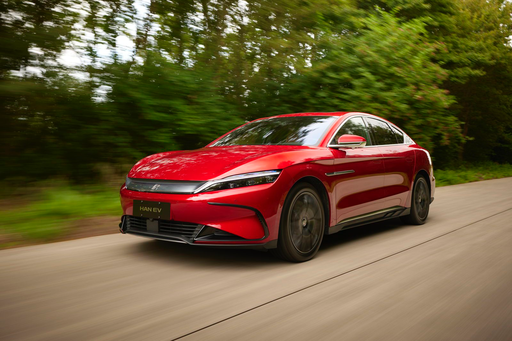 @ press.bydauto.be
@ press.bydauto.be
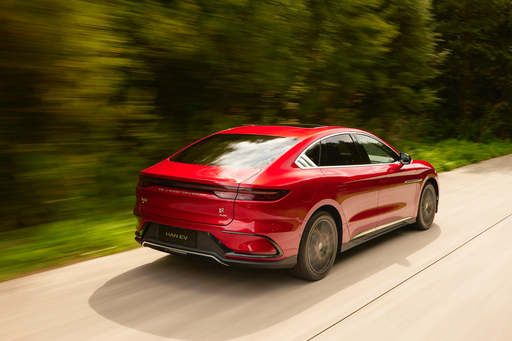 @ press.bydauto.be
@ press.bydauto.be
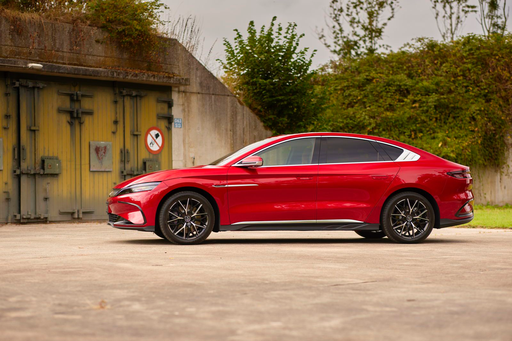 @ press.bydauto.be
@ press.bydauto.be
 @ press.bydauto.be
@ press.bydauto.be
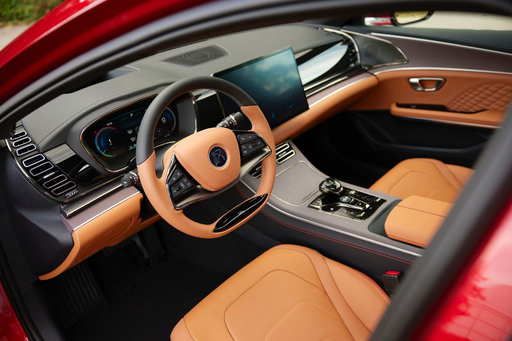 @ press.bydauto.be
@ press.bydauto.be
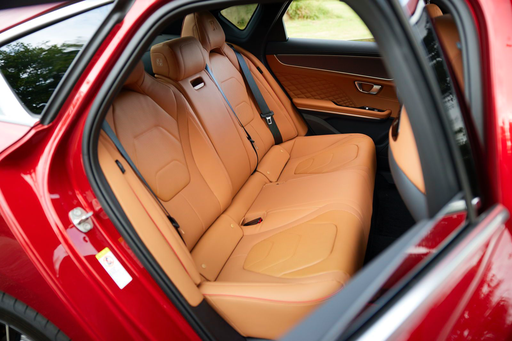 @ press.bydauto.be
@ press.bydauto.be
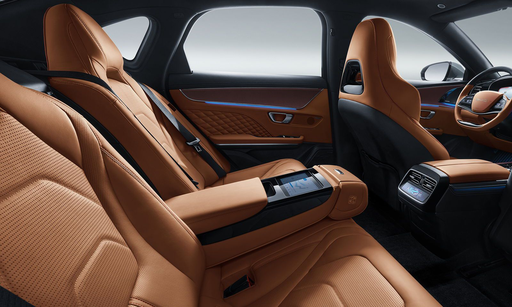 @ press.bydauto.be
@ press.bydauto.be
Citroen Jumper
The Citroen Jumper impresses with its robust design and exceptional versatility, making it a popular choice for both business and leisure purposes. Its spacious interior is thoughtfully designed to maximise comfort and practicality, providing ample room for passengers and cargo alike. With a smooth driving experience and a range of advanced safety features, the Jumper is well-equipped to handle the demands of modern motoring.
details

|
|
|
|
|
Costs and Consumption |
|
|---|---|
|
Price
59200 - 62200 £
|
Price
34200 - 58700 £
|
|
Consumption L/100km
-
|
Consumption L/100km
7.5 - 9 L
|
|
Consumption kWh/100km
18.50 kWh
|
Consumption kWh/100km
26.20 kWh
|
|
Electric Range
521 km
|
Electric Range
424 km
|
|
Battery Capacity
-
|
Battery Capacity
97.80 kWh
|
|
co2
0 g/km
|
co2
0 - 233 g/km
|
|
Fuel tank capacity
-
|
Fuel tank capacity
90 L
|
Dimensions and Body |
|
|---|---|
|
Body Type
Sedan
|
Body Type
Cargo Van
|
|
Seats
5
|
Seats
3
|
|
Doors
4
|
Doors
4
|
|
Curb weight
2325 kg
|
Curb weight
2075 - 2940 kg
|
|
Trunk capacity
410 L
|
Trunk capacity
-
|
|
Length
4995 mm
|
Length
5413 - 6363 mm
|
|
Width
1910 mm
|
Width
2050 mm
|
|
Height
1495 mm
|
Height
2254 - 2850 mm
|
|
Payload
335 kg
|
Payload
560 - 2020 kg
|
Engine and Performance |
|
|---|---|
|
Engine Type
Electric
|
Engine Type
Electric, Diesel
|
|
Transmission
Automatic
|
Transmission
Automatic, Manuel
|
|
Transmission Detail
Reduction Gearbox
|
Transmission Detail
Reduction Gearbox, Manual Gearbox, Automatic Gearbox
|
|
Drive Type
All-Wheel Drive
|
Drive Type
Front-Wheel Drive
|
|
Power HP
517 HP
|
Power HP
120 - 270 HP
|
|
Acceleration 0-100km/h
3.90 s
|
Acceleration 0-100km/h
-
|
|
Max Speed
180 km/h
|
Max Speed
90 - 170 km/h
|
|
Torque
700 Nm
|
Torque
320 - 450 Nm
|
|
Number of Cylinders
-
|
Number of Cylinders
4
|
|
Power kW
380 kW
|
Power kW
88 - 200 kW
|
|
Engine capacity
-
|
Engine capacity
2184 cm3
|
General |
|
|---|---|
|
Model Year
2023
|
Model Year
2024
|
|
CO2 Efficiency Class
A
|
CO2 Efficiency Class
A, G
|
|
Brand
BYD
|
Brand
Citroen
|
BYD Han
An Introduction to the BYD Han: A New Era in Electric Mobility
The BYD Han, a flagship model from the Chinese automotive giant BYD, is making waves in the electric vehicle market with its state-of-the-art technology and impressive performance. Known for its elegant design and cutting-edge features, the BYD Han offers an exciting look at the future of electric transportation.
Power and Performance: Unleashing 517 PS of Electric Might
At the heart of the BYD Han is a robust electric motor configuration that delivers a remarkable 517 PS, providing instantaneous torque and exhilarating acceleration. The vehicle can accelerate from 0 to 100 km/h in just 3.9 seconds, showcasing its potent performance capabilities.
Impressive Range and Efficiency
One of the standout features of the BYD Han is its remarkable range. With an impressive range of up to 521 km on a full charge and an energy consumption of 18.5 kWh/100 km, the Han combines efficiency with practicality. This makes it an ideal choice for both city commuting and longer road trips.
Stunning Design and Spacious Interiors
The external dimensions of the BYD Han - measuring 4,995 mm in length, 1,910 mm in width, and 1,495 mm in height - underscore its status as a luxury sedan. The vehicle offers a sleek Stufenheck design that marries sophistication with aerodynamics. Inside, drivers and passengers alike will appreciate the generous space, premium materials, and advanced infotainment systems.
Safety and Innovation at the Core
Safety is paramount in the BYD Han, which includes a suite of advanced safety features and driver assistance systems to ensure a secure journey. Additionally, the Han boasts an all-wheel-drive system, providing superior handling and stability across diverse driving conditions. Another innovative highlight is its CO2 efficiency rating of A, thanks to zero tailpipe emissions, enhancing its eco-friendly credentials.
Conclusion: A Pioneer in Electric Luxury
The BYD Han is not just another electric car; it's a statement of innovation, performance, and luxury. With a starting price range between €69,020 and €72,590, the Han represents a significant leap forward in electric vehicle technology, setting new standards for what drivers can expect from a luxury electric sedan. As the automotive world continues to evolve, the BYD Han is undoubtedly leading the charge towards a more sustainable and exciting motoring future.
Citroen Jumper
A Game-Changer in the Electric Van Market: The Citroën Jumper
The Citroën Jumper stands out in the realm of electric vans, bringing a blend of innovation, efficiency, and versatility to the table. This vehicle is designed to meet the needs of businesses searching for sustainable transport solutions, while also delivering impressive performance and technology.
Power Meets Performance: Technical Specifications
The Citroën Jumper is powered by an electric motor that provides an impressive 270 PS (200 kW) output. It operates with front-wheel drive and utilises an automatic transmission for smooth and efficient power delivery. The vehicle boasts a maximum torque of 410 Nm, ensuring it can handle various loads with ease.
A critical factor for business owners is operational cost, and the Jumper excels with a consumption rate of 26.2 kWh/100km and a driving range of 424 km on a full charge. This efficiency is complemented by a zero-emissions output, earning it a CO2 efficiency class of A.
Innovative Design and Features
Citroën has ingeniously optimised the Jumper's design for practicality and comfort. With a body style classified as a transporter, the vehicle is crafted for utility without sacrificing on essentials. It features a standard four-door configuration and offers seating for three, making it a practical choice for various industries.
The versatility in design is reflected in its various configurations, capable of accommodating different load requirements with a payload capacity ranging from 560 to 1385 kg. The Jumper's dimensions vary slightly with model choice, with lengths between 5998 mm and 6363 mm, width at 2050 mm, and height ranging from 2612 mm to 2850 mm.
Electric Innovation at its Core
At the core of the Citroën Jumper is its robust 97.8 kWh battery, making long journeys more feasible in the realm of electric vehicles. Notably, the vehicle maintains a lighter carbon footprint, contributing to sustainable transport solutions with its zero CO2 emissions.
Another innovation is the vehicle's capacity to reach top speeds between 90 km/h to 130 km/h, which shows that electric vans can maintain competitive performance metrics.
A Worthy Investment
While the Citroën Jumper signifies a higher initial investment, with prices ranging from €65,212 to €68,425, it promises considerable savings in fuel costs and environmental benefits over time. It presents an attractive proposition for businesses keen on contributing positively to the planet while maintaining operational efficiency.
In summary, the Citroën Jumper is a perfect embodiment of how electric vehicle technology can adapt to commercial needs, offering an efficient, innovative, and environmentally friendly transport solution.
The prices and data displayed are estimates based on German list prices and may vary by country. This information is not legally binding.
